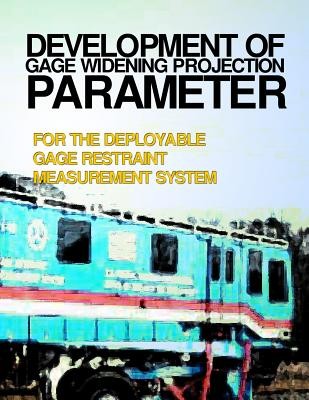
- We will send in 10–14 business days.
- Author: U S Department of Transportation
- Publisher: CreateSpace Independent Publishing Platform
- Year: 2014
- Pages: 58
- ISBN-10: 1499695675
- ISBN-13: 9781499695670
- Format: 21.6 x 28 x 0.3 cm, softcover
- Language: English
- SAVE -10% with code: EXTRA
Development of Gage Widening Protection Parameter for the Deployable Gage Restraint Measurement System (e-book) (used book) | bookbook.eu
Reviews
Description
Recent gage restraint measurement system (GRMS) developments include the redesign of GRMS vehicles to conduct testing from a deployable axle instead of using freight truck mounted axle and GRMS on hi-rail vehicles. This new test configuration results in boundary condition changes in the applied loads and split axle location; both of which influence the results. To ensure equivalent safety considering these significant changes, a comprehensive evaluation of the mechanistic basis for previous GRMS rulemaking, coupled with a fundamental investigation of factors influencing GRMS performance and inspection accuracy, was conducted along with field-testing to verify conclusions. Results of the investigation to date suggest a need for reconsideration of the gage widening ratio (GWR) equation, which treated vertical load as a constant parameter. With the new GRMS testing capability at a wider range of test loads, it is necessary to include vertical load in the GWR equation. GWR has been the leading source of discrepancies between the inspections conducted by original GRMS design and redesigned vehicles over the same territory. This report describes the analysis and recent field-testing to provide the fundamental basis for a proposed gage widening projection formula.
EXTRA 10 % discount with code: EXTRA
The promotion ends in 20d.02:15:56
The discount code is valid when purchasing from 10 €. Discounts do not stack.
- Author: U S Department of Transportation
- Publisher: CreateSpace Independent Publishing Platform
- Year: 2014
- Pages: 58
- ISBN-10: 1499695675
- ISBN-13: 9781499695670
- Format: 21.6 x 28 x 0.3 cm, softcover
- Language: English English
Recent gage restraint measurement system (GRMS) developments include the redesign of GRMS vehicles to conduct testing from a deployable axle instead of using freight truck mounted axle and GRMS on hi-rail vehicles. This new test configuration results in boundary condition changes in the applied loads and split axle location; both of which influence the results. To ensure equivalent safety considering these significant changes, a comprehensive evaluation of the mechanistic basis for previous GRMS rulemaking, coupled with a fundamental investigation of factors influencing GRMS performance and inspection accuracy, was conducted along with field-testing to verify conclusions. Results of the investigation to date suggest a need for reconsideration of the gage widening ratio (GWR) equation, which treated vertical load as a constant parameter. With the new GRMS testing capability at a wider range of test loads, it is necessary to include vertical load in the GWR equation. GWR has been the leading source of discrepancies between the inspections conducted by original GRMS design and redesigned vehicles over the same territory. This report describes the analysis and recent field-testing to provide the fundamental basis for a proposed gage widening projection formula.


Reviews